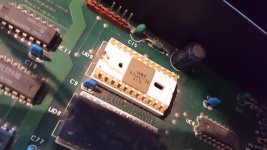eight088
Experienced Member
Hi
I just got my GQ-4x4 programmer, and I'm wanting to read the roms from a pet 8032. The writing on the rom is 901465-21. Before I do, I just wanted to know what type of rom I would select in usb prg in case choosing the wrong one can damage the rom? I think 2532 roms are a replacement so can I select that when reading them?
Cheers
I just got my GQ-4x4 programmer, and I'm wanting to read the roms from a pet 8032. The writing on the rom is 901465-21. Before I do, I just wanted to know what type of rom I would select in usb prg in case choosing the wrong one can damage the rom? I think 2532 roms are a replacement so can I select that when reading them?
Cheers

